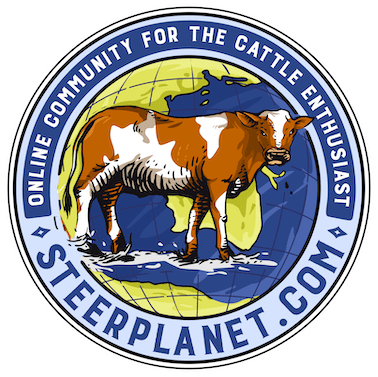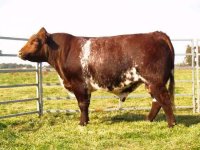Since everyone's environment is different, their way of handling cattle will be different. If your cattle are fat, they may need to lose a little weight. We work to maintain ours- especially this year.
But something that appears to be very consistent is BCS relating to dystocia and reproductive efficiency. Heifers that are overly fat- with increased fat in the pelvic canal can increase their chance of dystocia. Cattle to thin, BCS of 4 or under will not bread back regularly across the board on time. This has been studied extensively. Ideal BCS at the time of CALVING is 5 or 6 out of 9.
Something that may seem a little counter intuitive is that calve size and calving difficulty may not be absolutely correlated. Inadequate energy and protein diets may lead to a smaller calf size, but actually increase the chance of dystocia. Adequate protein and carbohydrate may increase calf size, but decrease the chance of dystocia. Lots of info out there on this. The biggest issue is the cows fat deposit in the birth canal.
Not saying anyone is underfeeding, how the heck would I know? But something to think about. The calf generally starves the cow anyway. Calves are like parasites. They get fed first- its just how it works. Because of this, when you starve a cow, you really only starve the cow. Calf is overall gonna grow. You may end up with a cow that is calving, but does not have adequate energy balance to go through the process of calving. Decreased strength for pushing, decreased uterine contractions, etc...
I can see more than one business plan. A. If you want a low input herd, you can likely select for one. But you will have production loses along the way. B. If you spend a little in maintaining condition, you will a have increased costs, but likely overall increased production as well.
For me, I think there is a balance. You can over feed and not get return for sure or create calving difficulties. I don't want free loaders, but I think a little care and prevention will often pay for itself.
If we consistently had 90 lb births here in our regions angus based heifers, it would expect a wreck (calf loss/cow loss). But I don't think we would see the same weights here that you would in the north, and shorthorns have a larger birth canal adapted for large calves- so I can't comment if the heifers were shorthorn or crosses what would happen. I had my first set of calves this month out of my first crosses and I didn't push the envelope on BW.
I was thinking about the whole progeny birth weight in environments. I image that not only does the environment affect the BW, but I would wonder if it doesn't have an influence on final carcass weight of adult cattle. Maybe it is purely selection, and you select for larger cattle in that environment. Naturally, if you look at deer throughout North America- the tiny ones in south Texas sure don't look like the ones from the North.
But I would bet that the same genetics exposed to the cold in the North pre-birth (Like so many genetic factors, the switches may be turned off or on in the uterus) would end up with a larger frame than the same genetics exposed to the heat down here. And if that was the case, the northern cattle would be better suited at delivering a larger calf. Its my theory made up in my head and I'm sticking to it. ;D

